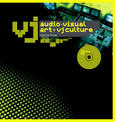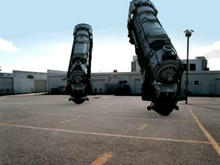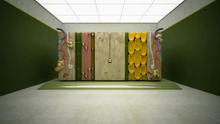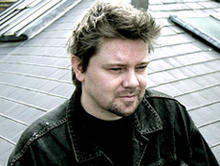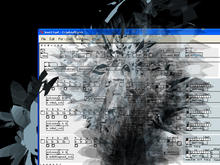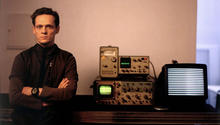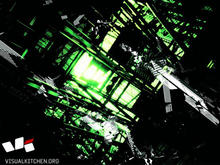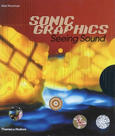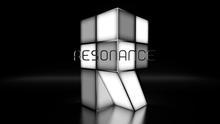Zeitguised
(founded in 2001) is based in London and the brainchild of American sculpture/ fashion grad Jamie Raap and German engineering/ architecture obsessive Henrik Mauler.
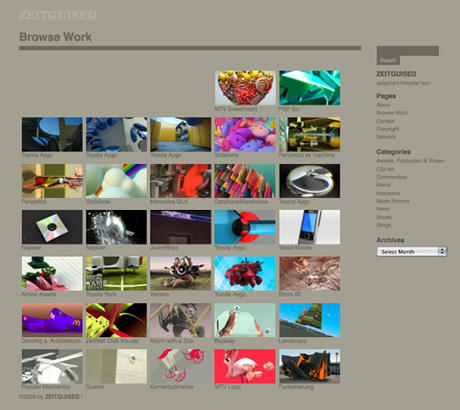
Zeitguised's high gloss art school 3D punk blends complex geometries, surreal objects, artificial behaviors and the recycling of digital readymades into their distinct hallucinatory narration style.
Toyota, Verizon, Mercedes, MTV, and Vodafone have engaged Zeitguised to create unique CG universes with their own rules and aesthetics. Recently, Zeitguised pushed the limits and understanding of what is CG as an art form when they created the short 'Peripetics', a piece that alters the perception of gallery installations by suspending the rules of cg and fine art at the same time.
Zeitguised most welcomes the challenge of deconstructing conventional narratives and then rebuilding them into unstable structures of color, shape and spatial motion, in order to establish new, artificial narratives where the surface is the content, color and form and motion itself are the protagonists. Their work constantly goes perpendicular to mainstream expectations.
Source: paranoid
Please tell us about the founding of Zeitguised.
We founded Zeitguised in early 2001, as an effort to channel our common and disparate interests (art, architecture, sculpture, fashion, design) into a field that could explore each of them and test the boundaries of what these areas meant to us.
How has Zeitguised progressed since completion of its first project?
Initially, we started out doing short independent films, installation projects, music clips to test the waters. We didn't have clear intentions, we sort of meandered through the terrain that came up in front of us. We started on some commercial work in 2003, but we probably were too resilient and always had that independent itch. In 2006 we started to do this kind of work for a living and have since, without cutting out time for experimental work.
Source: Ventilate
